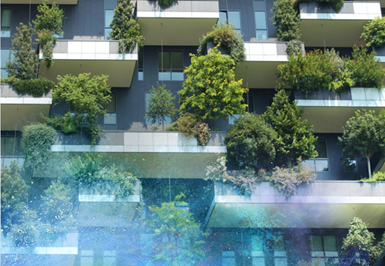AkzoNobel Interpon Brand Receives EPD for Third Time
An Enviromental Product Declaration has been issued to the Interpon powder coatings brand from AkzoNobel Powder Coatings.

Photo Credit: AkzoNobel
The Interpon powder coatings brand from AkzoNobel has secured its third Environmental Product Declaration (EPD), affirming the company’s commitment to the sustainability of its products and its sustainability goals, including a 50% carbon footprint reduction by 2030.
An EPD is an independently verified assessment of a product’s environmental impact across its whole life span, from initial production to end-of-life disposal or recycling. It contributes benefits to green building schemes, such as Leadership in Energy and Environmental Design (LEED) and Building Research Establishment Environment Assessment Methodology (BREEAM) certified building projects.
Interpon D became the first powder coating to achieve an EPD in 2015 before being renewed in 2018. The most recent EPDs are valid for five years with global geographical scope considering 11 representative powder coating production sites.
Interpon’s EPD is compliant with ISO 14025:2006 type III declaration and EN 15804:2012+A2:2019/AC:2021. EPD International AB, a company registered in Sweden, is the program operator and has the responsibility for the administration and operation of the International EPD System. The three declarations for the Interpon D1000, D2000 and D3000 product series deliver more detailed transparency in accordance with EN15804+A2.
“This EPD renewal shows how we are committed to providing total transparency concerning the sustainability credentials of the raw materials, manufacture and transportation associated with creating Interpon D,” says Bob Dirks, global segment manager architectural at AkzoNobel Powder Coatings.
“The interest for environmental declarations in building rating systems and certification schemes has increased significantly in the last few years, and Interpon continues to lead the way in giving architects and specifiers greater depth and knowledge of the materials they are using and their life cycle environmental impact.”
Related Content
-
Solar-Powered Photonic Cooling Enables Energy-Saving Coating
Passive cooling technology can reduce interior temperatures 5-13°C, offering weight, cost and CO2 benefits for cars, construction, aircraft and more.
-
AkzoNobel Powder Coatings Partners With CoatingAI
The partnership aims to explore possibilities with sustainability, including the development of Flightpath.
-
Sustainability, Electrification and Mobility
Industry events like ECOAT are good indicators of the trends that are top of mind for those in manufacturing.














.jpg;maxWidth=300;quality=90)
